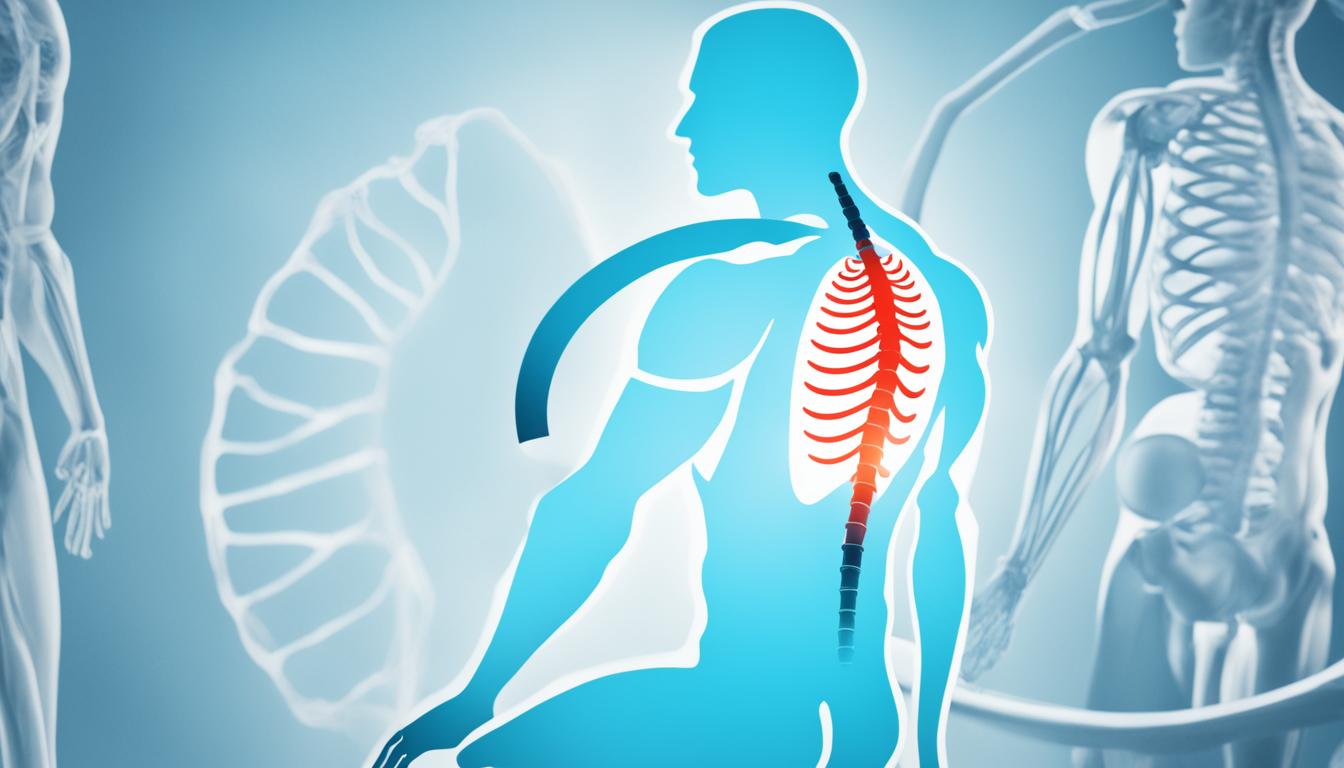MD, or Muscular Dystrophy, is a genetic disorder that affects around 1 in 3,500 males at birth. It leads to muscle weakness and shrinkage, starting in the pelvic area. This weakness then spreads to other body parts. It’s caused by issues in the DMD gene on the X chromosome, which reduces the protein dystrophin.
This disease can cause heart and breathing problems, making life hard for those with MD. Right now, there is no cure. Yet, researchers believe stem cell therapy could be a way to help.
Key Takeaways:
- MD, or Muscular Dystrophy, is a rare neuromuscular genetic disorder affecting approximately 1 in 3,500 male births worldwide.
- The disease is characterized by progressive muscle weakness and wasting, starting in the pelvic area.
- Changes in the DMD gene on the X chromosome lead to the absence or deficiency of the protein dystrophin.
- MD can result in serious complications such as cardiomyopathy and respiratory difficulties.
- While there is currently no cure for MD, research is ongoing, and stem cell therapy shows promise as a potential treatment option.
Symptoms and Diagnosis of MD
The symptoms of MD depend on the kind and how bad it is. Early signs, especially in DMD, include being slow to hit milestones, trouble walking and using stairs, big calf muscles, and lots of falls. These show muscle weakness and odd muscle work, common in MD.
As MD gets worse, the muscle weakness and loss spread. This can cause problems like a curved spine, trouble breathing, and thinking issues. These issues show up more as MD moves to later stages.
Diagnosing MD needs many steps, like checking your health history and physical signs. Genes are tested to find the specific problem. Doctors might also check muscle samples or do imaging tests to learn more.
By doing these tests, doctors can find the gene problems causing MD and see how bad the muscle damage is. This helps them pick the best treatments and make a plan for the person’s care.
Early Signs of MD
- Delays in reaching developmental milestones
- Difficulty walking and climbing stairs
- Enlarged calf muscles
- Frequent falls
Diagnostic Tests for MD
The diagnostic tests for MD include:
- Clinical evaluation
- Genetic testing
- Muscle biopsy
- Electromyography (EMG)
- Nerve conduction studies
- Imaging tests (e.g., MRI)
Advances in MD Treatment and Research
Currently, there’s no cure for MD. But, we have many ways to help manage symptoms and slow down the disease. Things like physical therapy, various medicines, and devices such as wheelchairs all aid in getting people moving.
Stem cell therapy is showing a lot of promise in MD treatments. This therapy involves putting stem cells directly into the muscles. The aim is to help them repair and regenerate muscle. It could be a big step in fighting the main cause of MD and boost muscle functions.
Gene therapy is another area making big strides. The goal is to add a good dystrophin gene to the body. This would help make the needed protein. Working at the genetic level holds hope for lasting benefits.
Research is in full swing to make stem cell and gene therapy safer and more effective. Scientists are working hard to better these treatments. Their aim is to make getting care easier and more efficient for folks with MD. This effort gives hope for a better future and quality of life.

